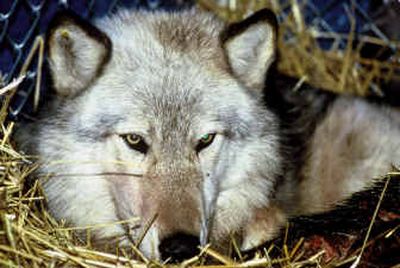Oregon adopts plan for migrating wolves

TROUTDALE, Ore. – The Oregon Fish and Wildlife Commission adopted a plan Friday for managing wolves migrating into the state, but a federal court ruling prevents the state from allowing ranchers to shoot gray wolves that attack livestock.
The plan would introduce breeding pairs gradually to the state.
Commission members said they would ask the Legislature to weigh in on the wolf issue, which could include development of a program to pay ranchers for animals lost to wolves.
The plan was adopted in response to changes in federal policy that are expected to cause wolves to migrate to Oregon from Idaho.
No wolves are known to be in Oregon now but three have been confirmed in recent years and more are expected to follow.
Oregon’s wildlife managers began working on a wolf management plan in 2002 but a federal judge issued a ruling Feb. 1 changing the federal Endangered Species Act status for wolves migrating into the state.
U.S. Dist. Judge Robert E. Jones threw out a U.S. Fish and Wildlife Service rule that had reduced Endangered Species Act protection from endangered to threatened for wolves migrating into neighboring states from thriving experimental populations in Montana, Wyoming and Idaho.
The federal rule was part of an effort to turn over greater responsibility for wolves to states.
The threatened species status allowed ranchers to kill wolves threatening their livestock. Under the endangered listing only federal agents could do so.
Friday’s plan is a slightly revamped version of their earlier wolf plan. Commission members said it is important to have a plan in place to address other issues not pre-empted by the judge’s ruling.
“It shows the federal government that we are ready to manage the wolves,” said commission member Dan Edge.
The plan calls for dividing Oregon into two wolf regions: Eastern Oregon and Western Oregon. Each region has an initial goal of establishing four breeding pairs of wolves.
Once four pairs produce two young each annually for three years in the eastern zone, the commission can consider taking wolves off the state endangered species list.
A second phase would establish seven breeding pairs in each zone. Once that level is met the plan moves to a third phase where populations could be controlled through public hunting and trapping.